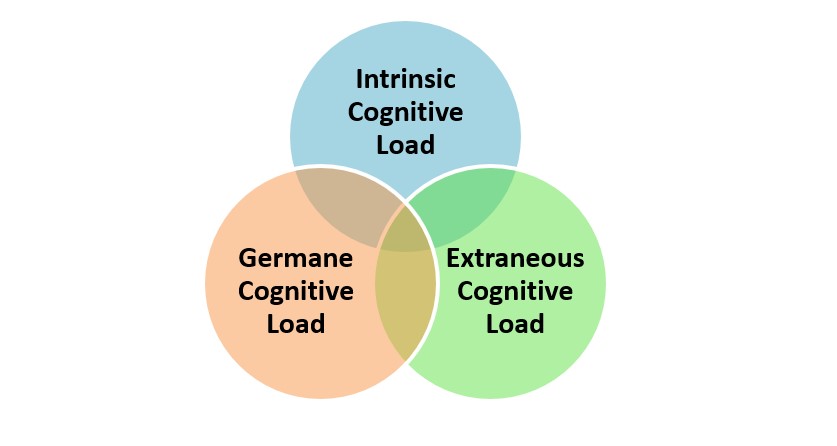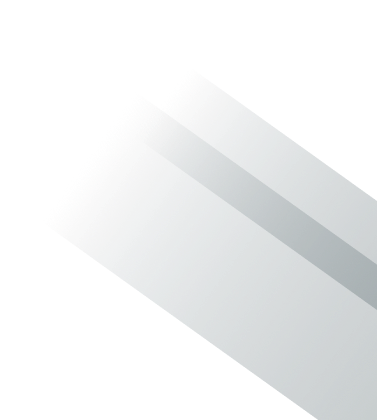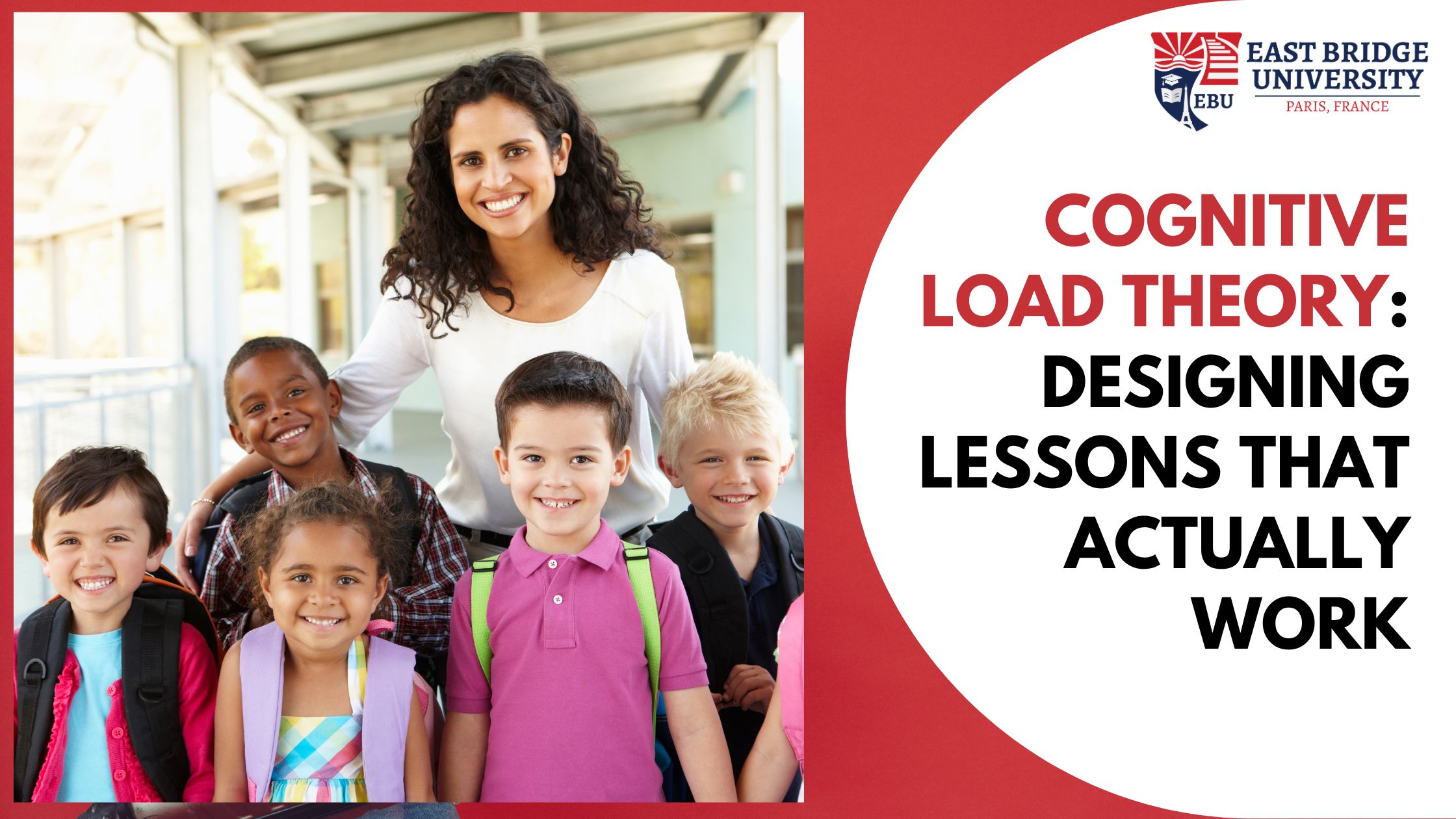In today’s fast-evolving educational landscape, especially in online settings, it’s not enough to simply deliver content - we must design lessons that respect how the human brain learns. One of the most powerful guiding frameworks for this is Cognitive Load Theory (CLT).
For educators, teachers and instructional designers - chiefly those pursuing or holding a Master of Education with educational psychology - mastering CLT can make the difference between lessons that only look good and those that actually work.
Understanding the Cognitive Load Theory
Cognitive Load Theory, primarily developed by John Sweller in the late 1980s, is grounded in cognitive psychology and human information-processing models. It says that working memory has restricted capacity: learners can only keenly process a few “chunks” of information at once.
CLT breaks down load into three categories:

· Intrinsic Cognitive Load — the intrinsic difficulty of the material (how numerous interacting elements the learner must consider).
· Extraneous Cognitive Load — load imposed by the way the material is presented (superfluous complexity, poor layout, and distracting elements).
· Germane Cognitive Load — the “desirable” load: mental effort invested in processing, constructing, and automating schemas (i.e. meaningful learning).
The aim in instructional design is to minimize irrelevant load, manage intrinsic load, and optimize relevant load.
Why CLT Matters for Educators (Especially Online)?
· In digital or online learning environments, jumbled interfaces, multimedia overload, and poorly integrated materials can quickly push learners beyond their cognitive limits.
· The split-attention effect (where learners must divide their attention between separate sources, e.g. text and diagram alienated) is a classic example of extraneous load. Integrating these into a unified display reduces that burden.
· The expertise reversal effect reminds us that as learners gain domain knowledge, the same supports or scaffolding may become counterproductive; instructional design must adapt as learners advance.
Empirical research continues to develop: a 2023 review discussed replication and refinement in CLT, showing that the theory remains active and evolving. Thus, educators, particularly those trained in educational psychology - are exclusively trained to translate these cognitive insights into superior lesson design.
Designing Lessons That Truly Work: Practical Guidelines
Here are evidence-based strategies, grounded in CLT, that, educators (especially online or hybrid instructors) can use:
1. Segment and scaffold
Break complex concepts into smaller segments. Use worked examples initially rather than asking novices to solve problems outright. This reduces intrinsic plus irrelevant load.
2. Integrate media, avoid split attention
When presenting diagrams and explanations, embed the text labels directly within the diagrams, rather than separately. This avoids forcing learners to split their attention.
3. Use dual channels intelligently
Because working memory processes visual and auditory streams via partly separate channels, combining visuals + narration (cautiously) can broaden effective capacity - if designed well. But avoid redundancy (e.g. reading on-screen text verbatim while showing it).
4. Remove distractions
Avoid “cute but irrelevant” visuals, background animations, or peripheral stories that do not contribute to learning, they create extraneous load.
5. Adaptive fading of guidance
As learners gain expertise, gradually reduce scaffolding (worked steps, hints) to encourage independent processing. This addresses the expertise reversal effect.
6. Encourage germane load via prompts and explanation
Use self-explanation prompts, reflection questions, or conceptual mapping tasks to steer learners to process material more deeply (rather than passively).
7. Test and iterate with cognitive load measures
Some research in educational technology uses eye tracking, physiological sensors, or self-report questionnaires to guess cognitive load during tasks - providing feedback for design.
Suppose you are designing an instructional module as part of your course and applying CLT not only improves your learners’ outcomes but also showcases your understanding of theory-to-practice translation. A Master of Education with educational psychology program that integrates educational psychology training give graduates an edge in designing effective, cognitively informed teaching.
To End With
Cognitive Load Theory offers a scientifically grounded, actionable framework for designing lessons that truly work, particularly in online or blended contexts. For students and educators in the field of educational psychology - including those in East Bridge University’s online M.Ed. with educational psychology programs, embedding CLT into your toolkit is a smart move. By minimizing unrelated load, managing fundamental complexity, and promoting relevant processing, your lessons will not only look logical, they will facilitate deeper, more robust learning.
Written By : Tammy C. Bow




